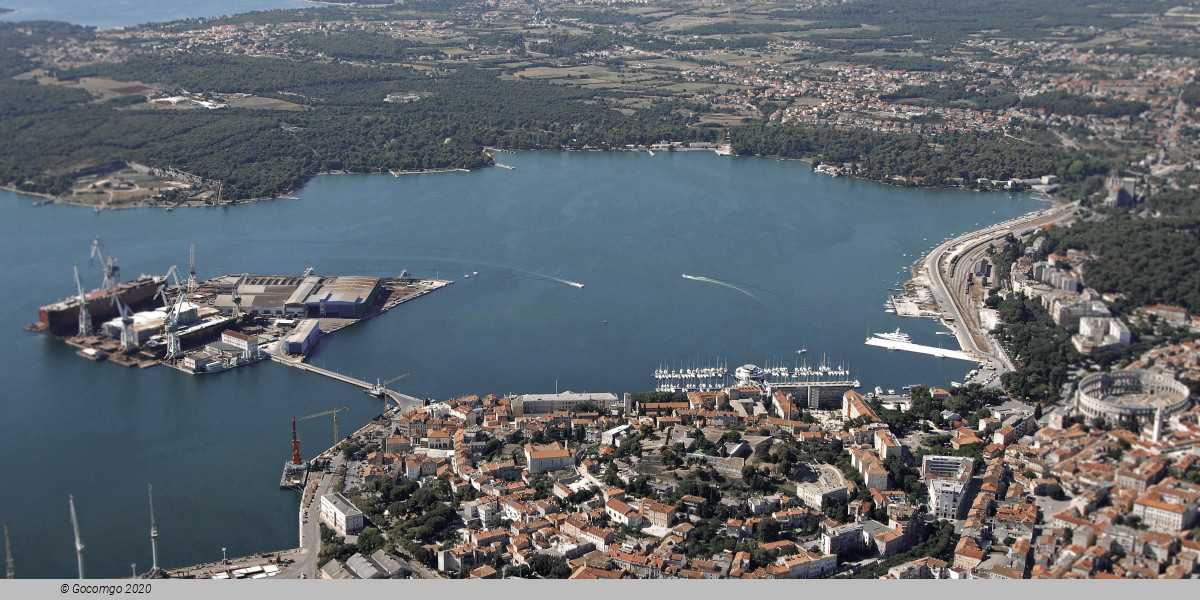Pula

Pula is the largest city in Istria County, Croatia, and the eighth-largest city in the country, situated at the southern tip of the Istrian peninsula, with a population of 57,460 in 2011. It is known for its multitude of ancient Roman buildings, the most famous of which is the Pula Arena, one of the best preserved Roman amphitheaters. The city has a long tradition of wine making, fishing, shipbuilding, and tourism. It was the administrative centre of Istria from ancient Roman times until superseded by Pazin in 1991.
Evidence of the presence of Homo erectus 1 million years ago has been found in the cave of Šandalja near Pula. Pottery from the Neolithic period (6000–2000 BC), indicating human settlement, has been found around Pula. In the Bronze Age (1800–1000 BC), a new type of settlement appeared in Istria, called 'gradine', or Hill-top fortifications. Many late Bronze Age bone objects, such as tools for smoothing and drilling, sewing needles, as well as spiral bronze pendants, have been found in the area around Pula. The type of materials found in Bronze Age sites in Istria connects these with sites along the Danube. The inhabitants of Istria in the Bronze Age are known as Proto Illyrians. Greek pottery and a part of a statue of Apollo have been found, attesting to the presence or influence of Greek culture. Greek tradition attributed the foundation of Polai to the Colchians, mentioned in the context of the story of Jason and Medea, who had stolen the golden fleece. The Colchians, who had chased Jason into the northern Adriatic, were unable to catch him and ended up settling in a place they called Polai, signifying "city of refuge".

